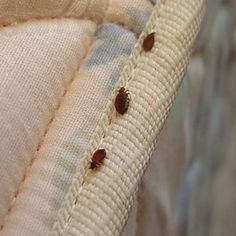A1 Bed Bug Removal Houston: Relied On Extermination Providers
Wiki Article
Understanding the Lifecycle of Pests for Targeted Control Techniques
Recognizing the lifecycle of bugs is a fundamental element of effective parasite administration approaches. Through a much deeper understanding of how bugs thrive and advance, tailored control methods can be made to deal with certain points in their lifecycle, eventually leading to more successful insect management end results.Importance of Understanding Bug Lifecycle
Understanding the lifecycle of insects is crucial for creating effective and targeted control strategies in pest management. By comprehending the numerous phases a parasite goes with from egg to grownup, bug control specialists can recognize prone factors in the lifecycle where intervention can be most successful.Moreover, identifying the details ecological conditions essential for each phase of the parasite's lifecycle can assist decisions on environment adjustment or exclusion methods to disrupt the lifecycle and lower pest populaces. This understanding makes it possible for pest monitoring specialists to carry out positive measures instead of depending solely on responsive treatments, resulting in even more lasting and sustainable parasite control options. Ultimately, a thorough understanding of pest lifecycles encourages insect control practitioners to customize their methods effectively, decreasing environmental influences and taking full advantage of control results.
Trick Stages in Bug Development
To efficiently carry out targeted control strategies in insect administration, a crucial aspect lies in adequately recognizing and recognizing the essential stages in bug growth. Parasite development generally consists of a number of vital phases that are important for their lifecycle and monitoring. The first stage is the egg stage, where bugs lay eggs that later hatch out right into larvae. Larvae after that proceed right into pupae, a phase where they undergo transformation before arising as adult bugs. Understanding these stages is necessary as it assists in determining at risk factors in the lifecycle where control procedures can be most reliable.

Susceptabilities in Insect Lifecycle
Throughout the numerous phases of a bug's lifecycle, unique vulnerabilities arise that can be purposefully targeted for effective control steps (A1 bed bug extermination houston). One critical vulnerability exists in the egg stage, where pests are usually a lot more vulnerable to particular pesticides or organic control representatives due to their soft outer covering, making them simpler targets for treatment. Comprehending these vulnerabilities in the parasite lifecycle is vital for developing specific and efficient control approaches that efficiently take care of insect populaces while reducing ecological impact.Applying Targeted Control Steps
.jpg)
Executing targeted control actions usually entails a multi-faceted method. This might include environment alteration to make the atmosphere less hospitable to insects, such as getting rid of standing water for mosquito control or securing access points for rodents. In addition, biological control techniques can be made use of, where natural predators or microorganisms are presented to keep insect populaces in check.
Chemical control, such as the careful application of pesticides, is an additional usual technique. It is crucial to utilize these substances judiciously to reduce environmental effect and prospective injury to non-target varieties - A1 bed bug removal houston. Integrated Parasite Management (IPM) techniques that integrate different control procedures in a worked with and lasting manner are typically one of the most efficient in accomplishing long-lasting bug administration goals. By carrying out targeted control procedures based on a complete understanding of parasite lifecycles, insect populaces can be properly regulated while decreasing dangers to human health and wellness and the atmosphere.
Enhanced Pest Monitoring Practices
:max_bytes(150000):strip_icc()/Bed-bug-control-tips-and-tricks-2656377-e580f433c55a4a98826e429753062084.jpg)
Additionally, the unification of biological control representatives, such as natural killers or virus of insects, can aid decrease dependence on chemical pesticides and advertise a more well balanced environment. Executing physical obstacles and traps can also be component of boosted pest administration techniques, offering non-toxic and targeted options for parasite control. Additionally, making use of scents and other semiochemicals can interrupt pest breeding patterns and interaction, leading to reduced insect populations gradually.
Verdict
By recognizing crucial stages in parasite growth and vulnerabilities in their lifecycle, targeted control measures can be implemented to decrease bug populations. Enhanced parasite monitoring methods can assist reduce the dependence on broad-spectrum pesticides and advertise more ecologically friendly and lasting insect control methods.Understanding the lifecycle of pests is visit the website necessary for find here establishing effective and targeted control approaches in parasite monitoring. By understanding the different phases an insect goes via from egg to adult, parasite control experts can determine prone factors in the lifecycle where intervention can be most effective. Eventually, a thorough understanding of bug lifecycles equips pest control professionals to tailor their methods efficiently, making best use of and reducing ecological influences control outcomes.
By carrying out targeted control steps based on a comprehensive understanding of parasite lifecycles, pest populaces can be properly controlled while reducing threats to human wellness and the environment.
By determining crucial phases in parasite development and vulnerabilities in their lifecycle, targeted control procedures can be carried out to decrease pest populaces.
Report this wiki page